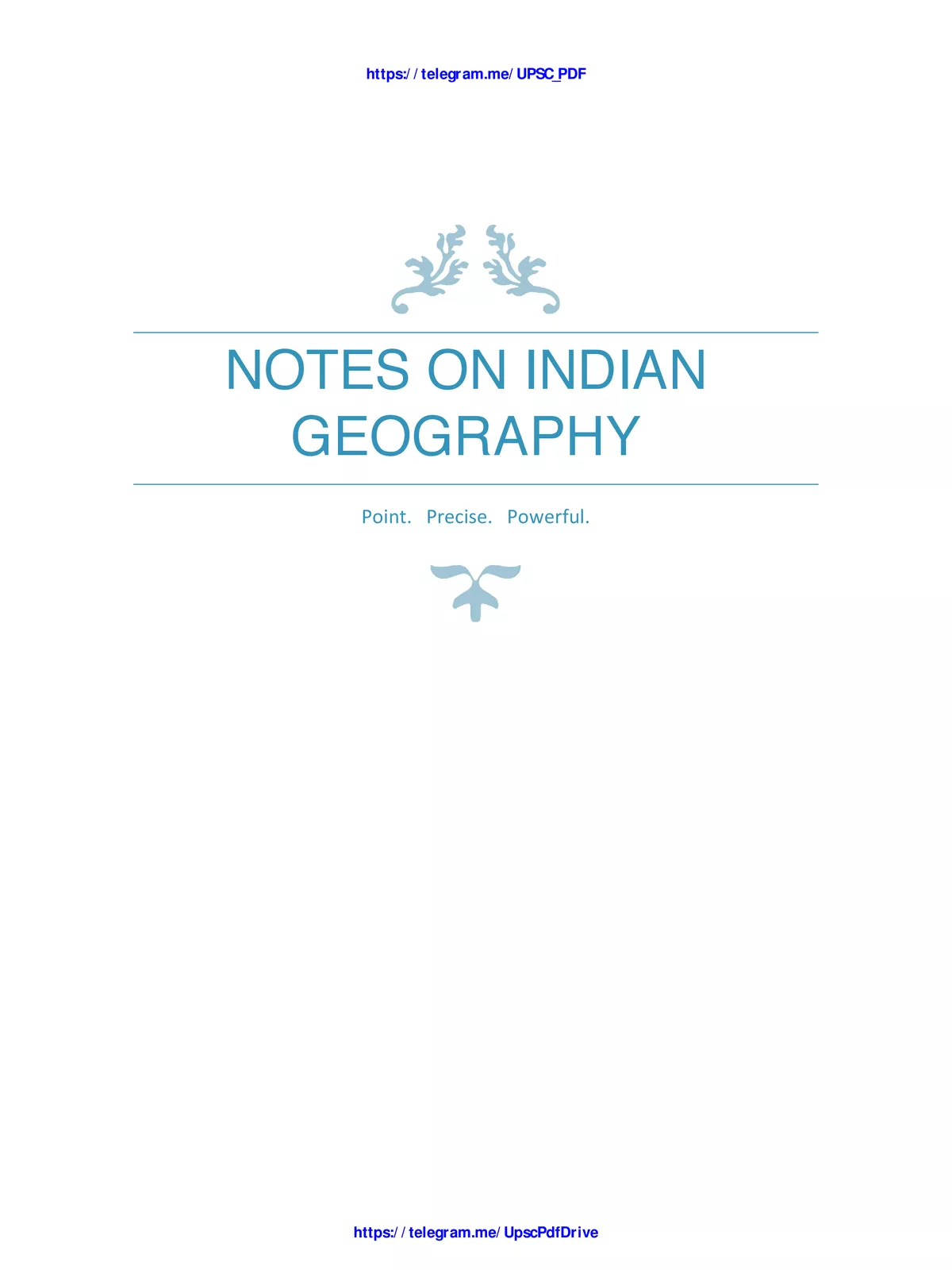Indian Geography Notes - Summary
The UPSC syllabus features Indian Geography as a crucial part of General Awareness for the prelims and includes it in the IAS mains syllabus for General Studies and Geography Optional papers. Understanding Indian Geography is essential for aspirants preparing for the UPSC exam, as it covers both Indian and World Geography.
Understanding Indian Geography
Geography is typically divided into two main categories: Physical Geography and Human Geography. Both of these areas can be explored under Indian Geography, which provides a comprehensive overview of our country’s landscape and its relationship with the world.
Indian Geography Notes
Physical Features of India
- Physiography refers to the physical features of an area, derived from its structure, processes, and development stages. India showcases significant physical variations. The Peninsular Plateau is one of the oldest and most stable landmasses on Earth, while the Himalayas and Northern Plains represent the youngest landforms. The Himalayas boast a youthful landscape with towering peaks, deep valleys, and fast-flowing rivers. On the other hand, the Northern Plains are made up of alluvial deposits, and the Peninsular Plateau consists of igneous and metamorphic rocks, featuring gentle hills and expansive valleys.
- India is situated in the south-central part of Asia.
- It shares land borders with seven countries: Pakistan and Afghanistan to the north-west, China, Nepal, and Bhutan to the north, as well as Myanmar and Bangladesh to the east. Among these, Bangladesh has the longest border at 4096.7 km, while Afghanistan has the shortest at 106 km. To the south, India’s maritime neighbours are Sri Lanka and the Maldives. Sri Lanka is separated from India by a narrow sea channel created by the Palk Strait and the Gulf of Mannar, while the Maldives islands lie to the south of the Lakshadweep islands.
Size
- Area: 3.28 million square km.
- India makes up about 2.4% of the world’s total geographical area.
- It ranks as the 7th largest country globally, following Russia, Canada, the USA, China, Brazil, and Australia.
- Land boundary: approximately 15,200 km.
- Total coastline, including Lakshadweep and Andaman & Nicobar Islands: 7517 km.
- Both the longitudinal and latitudinal extent of the mainland measures around 30°, even though the north-south distance appears larger than the east-west distance.
- The mainland stretches from Kashmir in the north to Kanyakumari in the south (3214 km) and from Arunachal Pradesh in the east to Gujarat in the west (2933 km). India’s territorial waters extend 12 nautical miles (~ 21.9 km) from the coastline (1 Nautical mile ~ 1.852 km).
- The southern region is found within the tropics, while the northern part lies in the sub-tropical or warm temperate zone. This positioning creates diverse landforms, climates, soil types, and natural vegetation across the country.
- The Standard Meridian of India (82°30′ E) cuts through Mirzapur in Uttar Pradesh and is used as the standard time for the entire country (there is a time difference of 2 hours from Gujarat to Arunachal Pradesh). Indian Standard Time is ahead of Greenwich Mean Time by 5 hours and 30 minutes. This Standard Meridian crosses through Uttar Pradesh, Madhya Pradesh, Chhattisgarh, Telangana, and Andhra Pradesh.
You can download the Indian Geography Notes PDF using the link given below.
